How to use all 10 Colossal minions in Voyage to the Sunken City
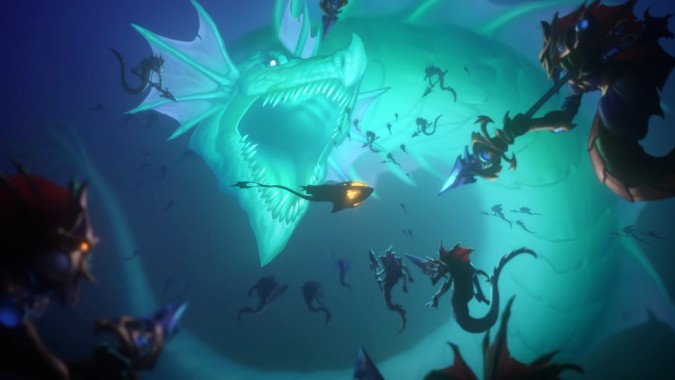
The Voyage to the Sunken City expansion brought a new type of minion to Hearthstone. Colossal minions are incredibly large and mighty, with effects that aren’t merely contained in a single card. When they come into play, they summon other parts of themselves in the form of additional minions — and it’s often in those minions that lies the secret to their real power.
Let’s take a look at the ten Colossal minions brought to us by this expansion, and try to find out the strengths and weaknesses of each one. Which of them are dominating the meta or have the potential to remain useful in the future — and which ones should you avoid spending your hard-earned dust on?
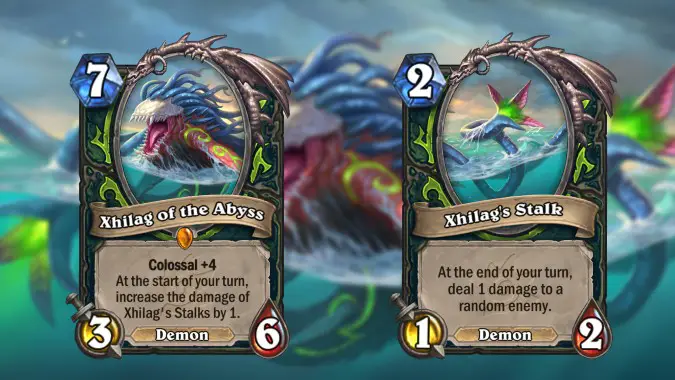
Xhilag of the Abyss (Demon Hunter)
This Colossal minion brings four Stalks with it, and each Stalk deals 1 damage to a random enemy at the end of your turn. This effect keeps increasing on each turn, so you ought to do everything in your power to keep Xhilag of the Abyss’s main body alive in order to reap the benefit from the Stalks.
A deck that allows you to make copies of Xhilag might be ideal to allow it to shine. Cards like Caria Felsoul or even Faceless Manipulator have been used to do that in Big Demon Hunter decks — but that archetype hasn’t seen a lot of success in Voyage to the Sunken City yet. Maybe Xhilag will find a better home for it in the future, but as of now, this Colossal threat isn’t as large as some of the others.
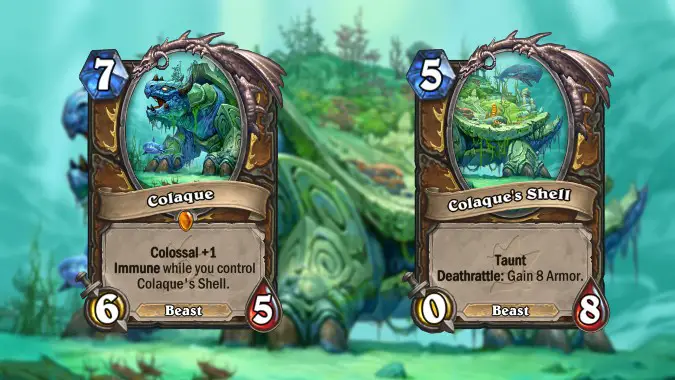
Colaque (Druid)
Colaque is a bit of a slow card. It summons a Colaque’s Shell with it, and its main power is attacking enemy minions while being immune — which it is for as long as the shell is “alive.” But it can’t attack immediately upon entering play, and it’s hard to guarantee that the shell will remain on the board for even one turn, which means that Colaque might not even get a single attack to benefit from its immunity.
Druid is a very strong class right now, but neither of its top deck archetypes, Ramp Druid and Beast Druid, are ideal homes for Colaque. Maybe this enormous turtle will find an archetype of its own in the future.
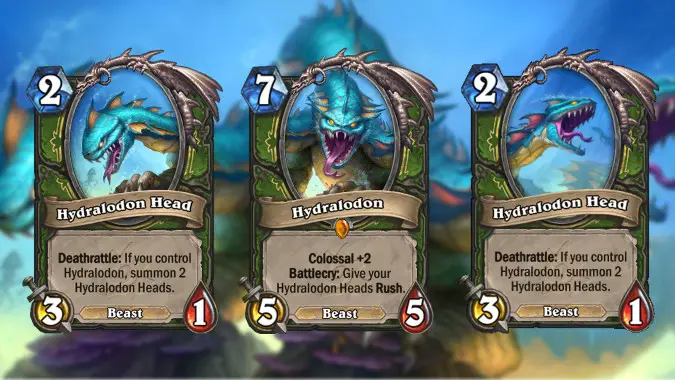
Hydralodon (Hunter)
And now we have a really good Colossal minion, Hydralodon, that shines at controlling the board. It can immediately cause a massive tempo swing in your favor: the two Hydralodon’s Head minions it summons come with Rush, and have 3 attack each. In addition to that, whenever one of this hydra’s heads is cut off, two other heads spawn to take its place. Impressive!
Sounds wonderful, but the problem is that this type of gameplay doesn’t really fit into any of the existing — or historical, for that matter — Hunter archetypes. Hunter has always been a very aggressive class, far more concerned with dealing damage directly to the enemy’s face than with controlling the board. The Quest Hunter variant does spend some of its resources in culling the enemy board, but it usually does so through spells or the Hero Power; minion-based back-and-forth isn’t really its thing. So we have a strong Colossal minion, but — once again — one that doesn’t have a home at the moment.
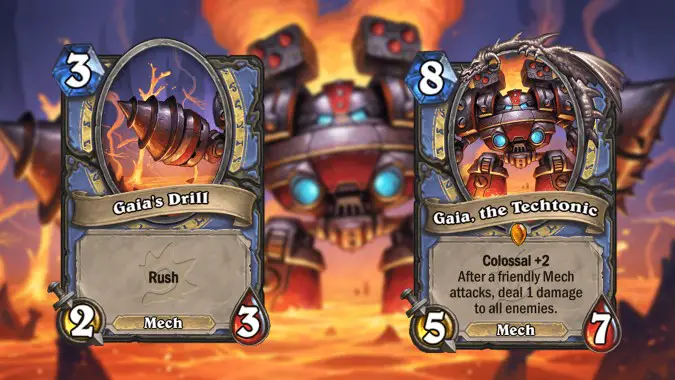
Gaia, the Techtonic (Mage)
And finally we have a Colossal minion with an obvious deck that it can shine on. Mech Mage was the first deck to be hyped for this expansion, and so far, it seems to live up to that hype. It’s powerful, and Gaia, the Techtonic fits perfectly into it.
Gaia comes with two Gaia’s Drill minions that have Rush, and that, by being Mechs, also benefit from the main body’s special effect: whenever a friendly Mech attacks while Gaia is on the board, you deal 1 damage to all enemies. So those two Rush attacks also mean two extra damage to everything in your opposition. Gaia will invariably make an impact in your favor when it comes into play, and likely turn games around.
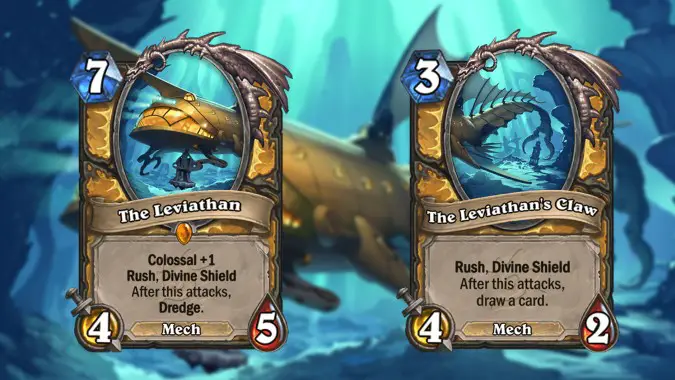
The Leviathan (Paladin)
We continue the Mech Colossal parade with another very powerful one. The Leviathan combines Rush effects and Divine Shield, both from the main body and from its appendage, The Leviathan’s Claw, for immediate board impact. But that’s not even its main power. It also allows you to Dredge whenever the main body attacks, and to draw a card whenever the Claw attacks. Which essentially means that you get to Dredge, and then draw the card that you selected from your Dredge effect, immediately.
Drawing cards is the cornerstone of any card game, but it’s even more powerful for a class like Paladin, which usually suffers from a lack of drawing effects. For that reason, The Leviathan is positioned to be useful not only in Mech Paladin decks, but for the class as a whole. In fact, it’s already seeing play in Control Paladin as well. If you opened a pack and got this card, count yourself lucky, for it’s likely to remain useful throughout its existence.
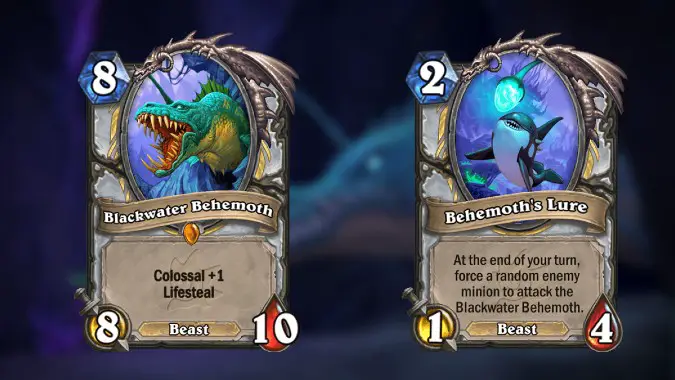
Blackwater Behemoth (Priest)
The Priest class is always in a weird position. In some metas, it’s very strong, to the point of feeling oppressive to a few players. In others — like the current one — it struggles, relying on some gimmick deck that isn’t consistent at all, but that might be infuriating to play against on those times when it does work.
Blackwater Behemoth exists in a limbo right now. It feels like a Control card, but Priest has no strong Control decks at the moment. Still, if a deck ever arises where Blackwater Behemoth becomes usable, it’s likely to be in some sort of Control Priest deck that might use it for minion removal combined with healing from its Lifesteal.
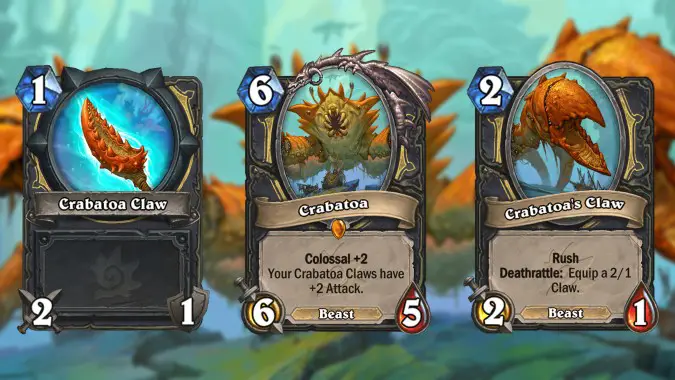
Crabatoa (Rogue)
Crabatoa is a good Colossal minion. Rogue has usually lived or died by Tempo plays, and this crab brings a lot of Tempo with it. Both of the Crabatoa’s Claw it summons have Rush, for immediate board-affecting aggression, and they also give you, the player, a 2/1 weapon when they die. But as long as Crabatoa’s main body is alive, both the Claw minions and the Claw weapons have +2 Attack, meaning that they’ll hit for four, and then you’ll get to attack for four as well.
This is just a solid minion that lends itself well to most of the usual Rogue strategies. Right now, we have Pirate Rogue, but I wouldn’t be surprised to see Crabatoa scurrying sideways to other Rogue decks in the future.
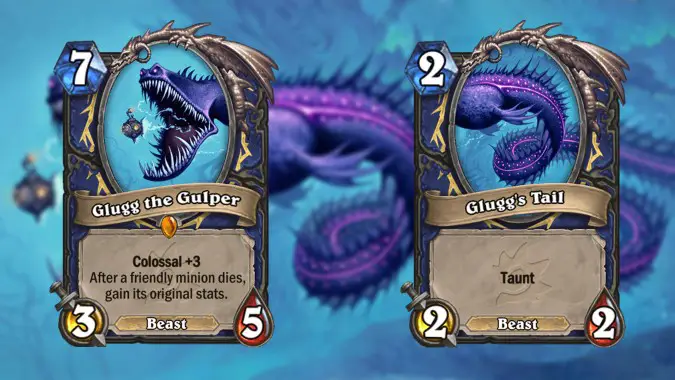
Glugg the Gulper (Shaman)
Glugg the Gulper has three appendages that it summons with it when it hits the board. They’re all 2/2 with Taunts, so nothing too impressive. However, Glugg’s special effect is that whenever a friendly minion dies, its original stats are absorbed into Glugg itself. Which means that although Glugg starts as a measly 3/5, it has the potential to grow much larger as you keep trading your minions — or having your opponent trade into your Taunts. Ideally, you want to summon Glugg when you already have three other minions that can attack immediately, so that it can absorb their stats as well.
Right now, some variants of the Burn Shaman deck are using Glugg in combination with Bioluminescence, for an immediate +4 Spell Damage — you can’t usually benefit from it immediately, but your opponent has to deal with those minions to prevent your barrage of spells on the next turn. Furthermore, we need to remember that Bloodlust has returned to Standard with the Core Set rotation. So there’s always the looming potential to use Glugg as a generator of four bodies on the board for a future Bloodlust closer, if a strong deck that uses this strategy ever arises.
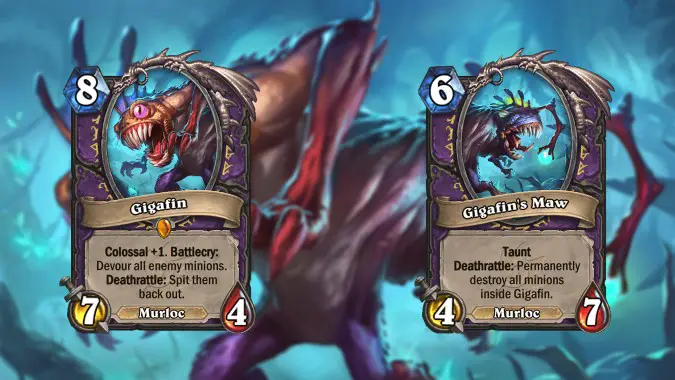
Gigafin (Warlock)
Don’t be fooled into thinking that Gigafin only fits into Murloc Warlock. While it’s true that many cards in this expansion were designed with that odd archetype in mind, Gigafin’s ability to instantly remove all of the opponent’s minions is definitely not something that only Murloc-based decks can benefit from.
In fact, Curse Warlock is already making use of this Colossal minion, and even the default deck recipe for Warlock for the expansion is a Curse-based deck that counts on Gigafin as another potential board clear. This minion certainly has a lot of potential, and I wouldn’t be surprised for it to last for a while, even if Murloc Warlock as an archetype doesn’t.
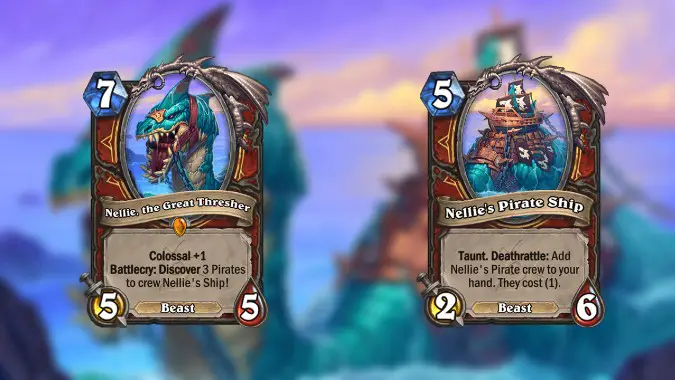
Nellie, the Great Thresher (Warrior)
And this one right here might be the strongest of all Colossal minions — at least for the current meta, that is. Nellie, the Great Thresher allows you to Discover three Pirates, and eventually — once Nellie’s Pirate Ship, it’s appendage, dies — add them to your hand, with each one costing only 1 mana.
While the implications this has for Pirate Warrior are obvious — so much that this archetype is, in fact, currently crushing the meta — it can easily find a home in other decks as well. Not every Pirate Warrior variant is using Nellie at the moment, but some are — and even some Control Warriors are making use of this Colossal as well. Getting three Pirates that you can Discover, and making each one cost only 1 mana — that’s the stuff of legends, the kind of effect that will always be potentially very powerful.
And there you have it. Which Colossal minion is your favorite? Which ones were you able to obtain from your packs? Are you considering crafting any of them?
Please consider supporting our Patreon!
Join the Discussion
Blizzard Watch is a safe space for all readers. By leaving comments on this site you agree to follow our commenting and community guidelines.




